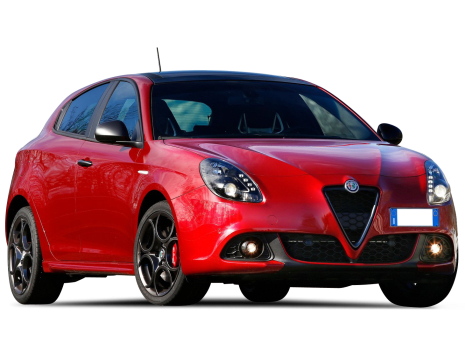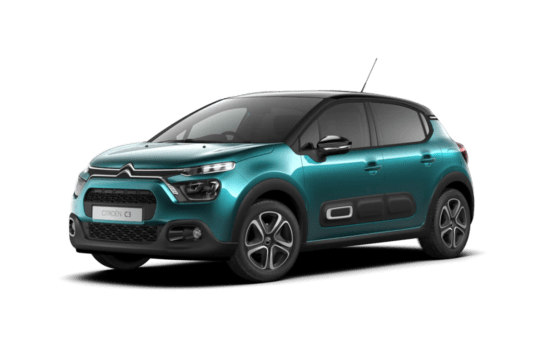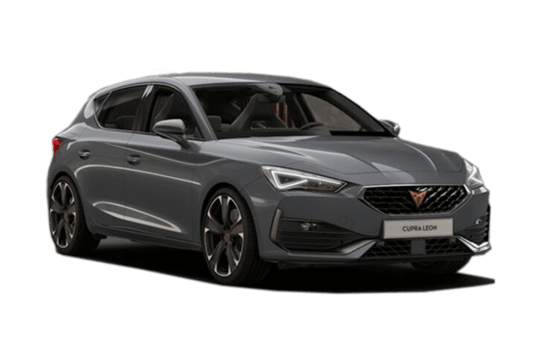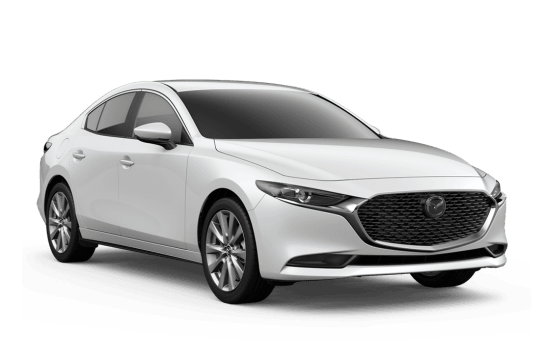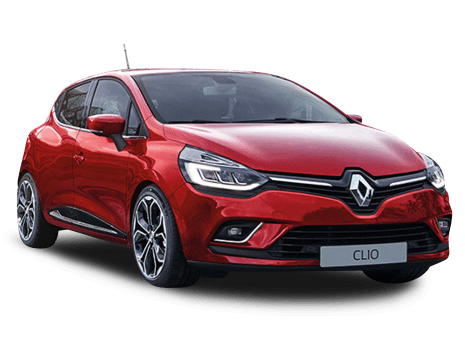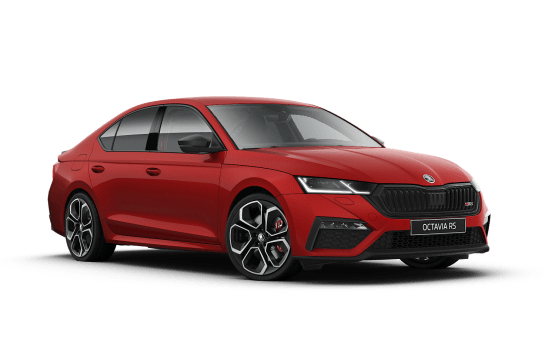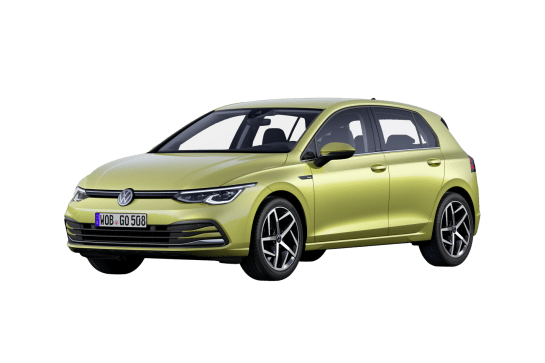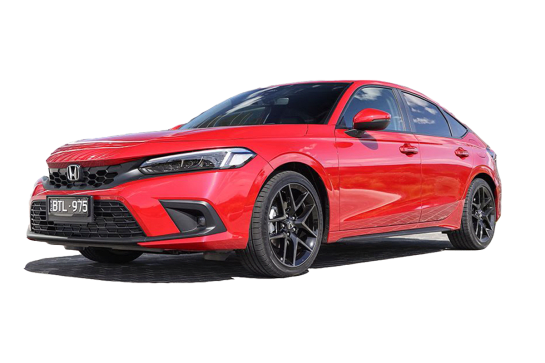
Honda Civic VS Peugeot 208
Honda Civic
Likes
- Great interior
- Lovely chassis
- Excellent engine
Dislikes
- Missing some safety gear
- Tight access to boot space
- Old media software
Peugeot 208
Likes
- Unique styling
- Sporty drive
- Spacious and comfortable
Dislikes
- Pricey
- Missing advanced safety
- Barely any cabin storage
Summary
Honda Civic
The Honda Civic's 10th generation is drawing to an end. Well, I say that, but there's still a pretty solid chance that the 11th generation won't quite be here this time next year.
I make the point because we've already seen a "prototype" for series 11 of the Honda Civic Story, but also because we won't actually get the car we've seen – the sedan. Just 20 per cent of Civic sales go to the booted version and then you have to merge that data with the rise of SUVs, both with Honda buyers and the market at large.
Things is, I think the sedan is the better of two for a variety of reasons which I will explain below. I also think the Civic, despite its advancing "age" (four years isn't really that long in the current climate) is still a fairly sensible choice among its peers, which include some serious competition.
| Safety rating | |
|---|---|
| Engine Type | 1.5L turbo |
| Fuel Type | Regular Unleaded Petrol |
| Fuel Efficiency | 6L/100km |
| Seating | 5 seats |
Peugeot 208
In a world of cheap, popular and well-specified Japanese and Korean small hatchbacks, it’s easy to forget the humble French cars that once helped define the segment.
They’re still around, though. You’ve probably seen a few Renault Clios, you might not have seen the tragically underrated new Citroen C3, and there’s at least a chance you’ve seen one of these – the Peugeot 208.
This iteration of the 208 has been around in one form or another since 2012 and is due to be replaced by a second-generation model in the near future.
So, should you consider the aging 208 in a busy market segment? I spent a week behind the wheel of the second-from-the-top GT-Line to find out.
| Safety rating | |
|---|---|
| Engine Type | 1.2L turbo |
| Fuel Type | Premium Unleaded Petrol |
| Fuel Efficiency | 4.5L/100km |
| Seating | 5 seats |
Verdict
Honda Civic7.3/10
As a car to drive, the Honda Civic feels great. It had a good start, but the later addition of the turbo 1.5 and the continuous honing of the chassis, steering and driveline – an endearing, unheralded trait that Mazda and Honda do so well – has taken what was a solid car and turned it into one I'd genuinely consider owning, even in this wild orange colour.
What it doesn't have is a full suite of safety systems, which is a real shame, because its main rivals do. Some of us are happy to forego things such as reverse cross-traffic alert and some are not. If you can, the Civic sedan should be in the reckoning. And the clock is ticking.
Peugeot 2087.1/10
The 208 GT-Line is hardly a car purchased on its value offering; it’s an emotional purchase. Fans of the brand know it, even Peugeot knows it.
Here’s the thing, though, the GT-Line looks the part, is true-to-its-roots in how fun it is to drive, and will surprise most with its spacious dimensions and decent spec level. So, while it might be an emotional buy, it’s not necessarily a bad one.
Have you owned a Peugeot in the past? Share your story in the comments below.
Design
Honda Civic
Making fun of the Civic's over-supply of angles and lines is really very easy, so for once I'll refrain. Partly because the sedan is better than the hatch in this respect and also because – somehow – I have become quite fond of its wacky face. The sedan's profile is also more flowing and, with all the RS piano black and extra aggro (which ironically means yet more lines and angles), it sat much more happily in my camera lens than before. I wonder if the Civic's controversial looks have aged well in the same way Chris Bangle BMWs have? Because we're all suddenly pretty fond of those now, aren't we?
My changed opinion is bound to infuriate Honda's designers who have cleaned up the Civic for its next version. At this point I should mention that the sedan is on its last legs here in Australia – we won't be getting the next one.
The interior is as good-looking as it is practical. I still don't like the angles of the gauges in the left and right sections of the dash, but the central digital dash section is really good and easy on the eye. The RS picks up some subtle features like the strip of chequered flag fabric on the seats. It's a nice, clean look and I like the use of metallic materials on the climate controls and the stereo. It's a very calm interior, quite a contrast to the exterior.
Peugeot 2087/10
It might not be for you, but I had come around to the 208’s design by the time I handed the keys back. It’s a bit more upright and frumpy than the slick, conservative design of the Volkswagen Polo, or the swish, cutting-edge lines of the Mazda2.
It’s undeniably a European city car in its short and upright stance, but blazes its own path, even compared to French competitors. I grew quite fond of its weird, slopey bonnet, unconventional face and tough rear wheel arches. The way the rear light clusters clasp the rear to bring the design together is quite satisfying, as are the aluminium-brush alloys, recessed lights and the single chrome tailpipe.
It could be argued that this is a path well-travelled, with this 208 mirroring the design cues of the 207 that came before it, but I’d argue it holds its own, even in 2019. If you’re after something radically different, the styling on its replacement, due next year, is one to look out for.
On the inside, things are… unique.
There are cushy, deep seats for front occupants, with a super vertical dash design, leading up from the deep-set shifter (an older look) to the top-mounted media screen, which is slick, with its chrome bezel and lack of buttons.
The steering wheel is awesome. It’s tiny, strongly contoured and covered in nice leather trim. Its small, almost oval shape is super satisfying to wrangle, and enhances the way you interact with the front wheels.
What is extra strange about it is how far separated it is from the dash cluster. The dials are perched way atop the dash in a layout Peugeot refers to as the ‘iCockpit’. This is all very cool and aesthetic and French if you’re my height (182cm), but if you’re particularly short or particularly tall, the wheel begins to obscure vital information.
Other strange things about the cabin mainly involve little bits of plastic of varying quality strewn about the place. While the overall look is very cool, there are some odd bits of chrome trim and hollow black plastics about that probably don’t need to be there.
Practicality
Honda Civic
The Civic's cabin is swimming in space and and filled with comfortable seats and lots of storage.
The back seat is super-spacious as it has been forever. Having driven the i30 Sedan last week, I'm having difficulty splitting the two for legroom and lounging space. Where the Civic loses out – and it's close – is in rear headroom.
There are four cupholders and bottle holders and a massive central bin between the front seats, big enough to conceal the massive new PlayStation 5 (okay, maybe not that big, but it it certainly looks big enough).
The boot holds a gigantic-for-a-small sedan 519 litres with the seats in place. Honda doesn't supply a total figure with the seats down, but it will be a lot. The opening for the bootlid is a little tight, so don't get too excited at Ikea.
Peugeot 2087/10
The 208 hit me with some surprises here. Firstly, don’t drink and drive this car. And, by that I mean, don’t even begin to think you’ll find a good spot for a decently sized coffee. There are two cupholders under the dash; they are about an inch deep, and narrow enough to accommodate maybe a piccolo latte. Place anything else in there and you’re asking for a spillage.
There’s also an odd little trench there that barely fits a phone, and a top-box arm-rest thing that’s tiny and bound to the driver’s seat. The glovebox is large and also air-conditioned.
The front seats offer heaps of room, though, for arms, head and especially legs, and there is no shortage of soft surfaces for elbows.
The back seat was also a surprise. I was expecting it to be an afterthought, as it is in many cars this size, but the 208 delivers, with excellent matching seat trim and generous legroom.
Sadly, that’s where back-seat amenities end. There are tiny trenches in the door, but no air vents or cupholders. You’ll have to make do with just the pockets on the backs of the front seats.
Don’t be fooled by the 208’s cropped rear, the boot is deep and grants a surprising 311 litres to the shelf, and maxes out a 1152L with the second row folded down. Also surprising is the inclusion of a full-size steel spare, stashed under the floor.
Price and features
Honda Civic
The Civic RS price has slowly crept north, along with the prices of its mostly Korean rivals, now at $34,090. It's a fair bit more than the Ford Focus ST-Line, but you can't get a sedan version of that and infuriatingly neither can you get the wagon.
The RS has 18-inch alloys, a 10-speaker stereo, faux leather seats (nothing wrong with that), auto LED headlights and DRLs, dual-zone climate control, reversing camera, front and rear parking sensors, keyless entry and start, electric driver's seat, auto headlights and wipers and a space-saver spare.
The 7.0-inch matte-finished touchscreen runs Honda's homage-to-the-80s software package that is bolstered by the presence of Apple CarPlay and Android Auto. It also has DAB, which is a nice touch, but it is missing built-in sat nav, which most of its rivals have.
Peugeot 2086/10
This Peugeot is never going to be as cheap as a Mazda2 or Suzuki Swift. The current range spans from $21,990 for the base Active to $26,990 for the GT-Line, and that’s all before on-road costs.
Safe to say you’re looking at a $30k hatch then. For the same money you could be hopping into a decently specified Hyundai i30, Toyota Corolla or Mazda3, but Peugeot bank on the fact that this car appeals to a special kind of customer; the emotional buyer.
Perhaps they had a Peugeot in the past. Perhaps the quirky styling calls out to them. But they aren’t interested in value… per se.
So do you at least get a decent standard spec? The GT-Line comes with a 7.0-inch multimedia touchscreen with Apple CarPlay and Android Auto support, built-in sat-nav, 17-inch alloy wheels wrapped in some seriously low-profile Michelin Pilot Sport rubber, panoramic fixed glass roof, dual-zone climate control, self-parking function, front and rear parking sensors with a reversing camera, rain sensing wipers, sports bucket seats, auto folding mirrors and GT-Line specific chrome styling touches.
Not bad. The styling is certainly turned up a notch over the regular 208 range and the spec list makes it one of the better-equipped cars in the segment. However, there are some notable omissions which hurt on a car at this price. For example, there’s no option for push-start or LED headlamps.
Safety is okay, but it could use update. More on that in the safety section.
Under the bonnet
Honda Civic
The 1.5-litre four-cylinder has a light pressure turbo bolted in to produce 127kW at 5500rpm and 220Nm between 1700-5500rpm. Those numbers are 23kW and 46Nm up on the 1.8-litre, which goes without the turbo.
You can let the continuously variable transmission (CVT) look after the turning of the front wheels or if you're feeling sporty – not an unreasonable expectation if you've picked the RS – you can use the paddle shifters which tell the computer to put some fake gears into the box for you to shift up and down.
Peugeot 2088/10
The regular (that’s non-GTi) 208s are offered with just one engine now. A 1.2-litre turbo petrol three-cylinder, which produces 81kW/205Nm. While that doesn’t sound like an awful lot, it turns out to be plenty for the little 1070kg hatch.
Unlike some notable French manufacturers, Peugeot has seen the light and dumped single-clutch automatics (aka automated manuals) in favour of a six-speed torque converter auto, which does its best to have you not notice it.
It also has a stop-start system, which might save fuel (I couldn’t objectively prove that it did) but will definitely annoy you at the lights.
Efficiency
Honda Civic
Honda's official testing suggets a combined cycle figure of 6.3L/100km which is lower than the 1.8-litre, a nice bonus when you have all that extra power to play with. My week with the Civic was mostly suburb-bound and I scored a respectable (indicated) 8.2L/100km.
Peugeot 2087/10
The claimed/combined fuel number for the 208 GT-Line is a slightly unrealistic-sounding 4.5L/100km. Sure enough, after a week of city/highway combined driving, I produced a number of 7.4L/100km. So, a solid miss. Slightly less-enthusiastic driving should see that number drop, but I still don’t see how you could get it down to 4.5L/100km.
The 208 requires a minimum of 95RON mid-range fuel, and has a 50-litre tank.
Driving
Honda Civic
This iteration of the Civic has been with us for a while now. I wasn't absolutely sure about it when I first drove it – that was partly down to the less-than-stellar 1.8 and an at-times doughy CVT.
Over the years I've been very lucky to drop my posterior into two, three or even four Civics per year. During that time I have noted some subtle changes, such as the CVT's more attentive nature and the progressive improvement of the ride on particularly bumpy surfaces, such as Sydney's concreted arterial roads.
The RS itself is no different mechanically to the other 1.5-litre turbo-engined cars in the range (it's an entire engine's worth of power short of the madcap Type R) but over the years, that has meant good things. I've always liked the low-set driving position, it's lower than many hot hatches. You sit in and down in the Civic and it feels quite sporty.
Turn the wheel and it's all very positive, with a very pleasant ride and handling balance. The CVT is still a CVT but, especially in the turbo, it has more grab off the line and doesn't indulge in flaring as you'd find in a Subaru, turbo or not. It's actually fun to drive, especially if you draft in the paddles to do some work.
But it's also a car you need never provoke to enjoy driving. The comfortable ride and secure handling make it the kind of car anyone can like. The steering wheel is just right, the controls all feel really nice to use and touch. There's nothing particularly flashy about the Civic apart from its looks, but it's such a comfortable car with a super-solid feel to its engineering.
The main advantage of the turbo engine is that it doesn't have to work as hard as the 1.8 to keep the Civic moving. The extra torque is always there and makes it a much more relaxed car around town than the 1.8-powered Civics, while giving you the extra grunt to push out into traffic, or pull off a tricky overtake.
Peugeot 2088/10
The 208 is good fun, and lives up to its heritage of making the most of its lightweight dimensions and small figure to make for an agile city-slicker. The engine outputs might look like just any other hatch in this class, but the turbo comes on nice and strong in an impressively linear fashion.
It makes for reliable and strong acceleration, with the peak 205Nm of torque available at 1500rpm.
A featherweight at 1070kg, you’ll find no complaints from me about its performance. It’s no GTi, but it will still be warm enough for most.
Despite its upright figure, handling is fantastic, too. The low-profile Michelins feel planted at the front and back, and, unlike the GTi, you never really feel at risk of understeer or wheelspin.
This is all enhanced by the intense helm, with the small steering wheel giving it a thoroughly engaging feel. You can chuck this car into corners and down alleyways with enthusiasm, and it feels like it loves it as much as you do.
The suspension is stiff, especially at the rear, and the low-profile rubber makes it noisy on coarse-chip surfaces, but you’ll barely hear a peep out of the little engine. Other notable downsides include the slow-to-react stop-start system (which you can turn off) and the lack of active cruise, which would be nice at this price.
Safety
Honda Civic
All Civics come with six airbags, ABS, stability and traction controls.
The Honda Sense package adds forward collision warning, forward AEB (high and low speed), lane departure warning and lane keep assist.
One of my favourite Honda quirks is LaneWatch. Flick the indicator for a left-hand turn and the media screen displays the output of a camera pointed down the left-hand side of the car. It's still too bright at night, but you can disable it or tap the button on the end of the indicator stalk to cancel it.
You also get two ISOFIX anchors and three top-tether points.
The Civic sedan was last assessed by ANCAP in April 2017 and scored five stars.
Peugeot 2087/10
On the topic of active cruise, this car is showing its age in the safety department. Available active safety is limited to a camera-based city-speed auto emergency braking system (AEB). The lack of a radar, even optionally, means no active cruise or freeway-speed AEB. There’s also no option for blind-spot monitoring (BSM), lane-departure warning (LDW) or lane-keep assist (LKAS).
Sure, we’re talking about a car which largely dates back to 2012, but you can get cars a full size up with all those features for close to the same money from Korea and Japan.
On the more impressive side, you get an above-average set of six airbags, seatbelt pre-tensioners and rear ISOFIX child-seat mounting points, as well as the expected set of electronic braking and stability aids. A reversing camera is also now standard.
The 208 previously held a maximum five-star ANCAP safety rating from 2012, but that rating is limited to four-cylinder variants, which have since been phased out. Three-cylinder cars remain un-rated.
Ownership
Honda Civic
Hondas ship with a five-year/unlimited kilometre warranty, which is competitive as more and more manufacturers consider this a minimum.
The "Tailored Servicing" program caps nine of the first 10 services at $281, with just one service jumping to $310. That's reasonable value for a turbo engine, except servicing is every 12 months or 10,000km. That means more than one trip per year to the dealer if you drive more than 10,000km per year.
Peugeot 2087/10
Peugeot offers a five-year/unlimited-kilometre warranty on its entire range of passenger cars, which is up-to-date and in-line with most segment competitors.
The 208 requires servicing at yearly or 15,000km intervals (whichever occurs first) and has a fixed price to the length of the warranty.
Servicing is not cheap, with yearly visits costing between $397 and $621, although there’s nothing on the optional extras list, that price is all-inclusive.
Total cost over the five-year period is $2406 for an (expensive) average of $481.20 a year.



